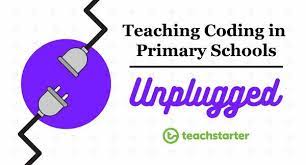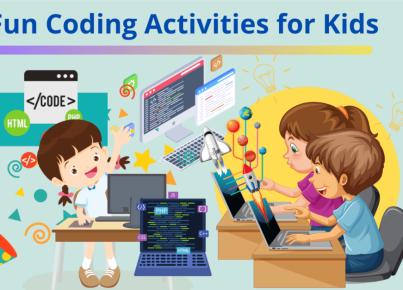In an age where technology is omnipresent, equipping the younger generation with coding skills has become increasingly important. Teaching coding in primary schools is a growing trend, and it doesn’t always require computers. This might sound contradictory—how can you learn coding without a
computer? The answer lies in “unplugged” activities that teach computational thinking and the basics of algorithms without relying on technology.
Unplugged coding activities are particularly beneficial in primary education for several reasons. They emphasize problem-solving and logical thinking skills that are fundamental to computer programming but do so in a manner that is accessible and engaging for young learners. Through games, puzzles, and hands-on activities, students can grasp the conceptual underpinnings of coding without the added complexity of syntax and programming languages.
One popular unplugged activity involves using a simple set of instructions to navigate a maze. Students give each other directional commands to follow a path or sequence actions to achieve an objective. This provides a basic understanding of algorithms—a set of instructions designed to perform a specific task.
Another activity uses story sequences where students must arrange pictures or sentences into a logical order, mirroring the sequencing required in programming. They learn that order matters and that a clear sequence of events is necessary to achieve the desired outcome.
Pattern recognition is another key aspect of computational thinking introduced through unplugged coding activities. Identifying and predicting patterns are important skills when learning about loops—an essential concept where certain code sequences are repeated.
By replacing screens with tangible experiences, teachers can foster collaboration among students and ensure that learning is not limited to those with access to devices at home. Unplugged coding helps demystify computer science by stripping away the potentially intimidating technical aspects and focusing solely on the core principles.
Additionally, by starting unplugged, educators avoid the pitfall of children passively receiving information from a screen. Instead, these activities promote active learning through doing, discussing, and teaching others—dynamics essential for deep learning.
Integrating unplugged coding into primary school curricula prepares students for future digital literacy regardless of their socioeconomic background. It broadens access to foundational computer science concepts, ensuring every child has the opportunity to cultivate these crucial 21st-century skills from an early age.
In conclusion, teaching coding unplugged in primary schools has demonstrable benefits: it introduces children to computational thinking without requiring expensive hardware; it encourages effective collaboration; it promotes inclusivity; and it prepares students for a future that will surely be even more entwined with technology than our present day. By starting young and starting simply, we give children tools to not just navigate but also shape the digital world ahead.





